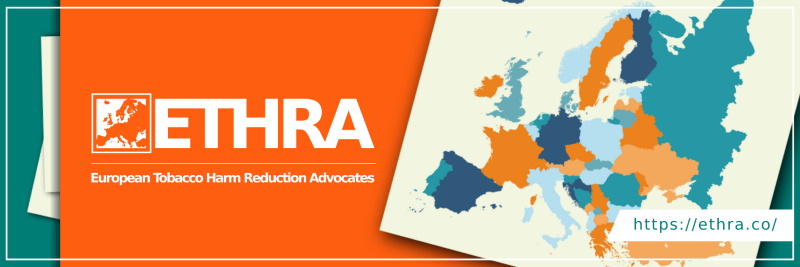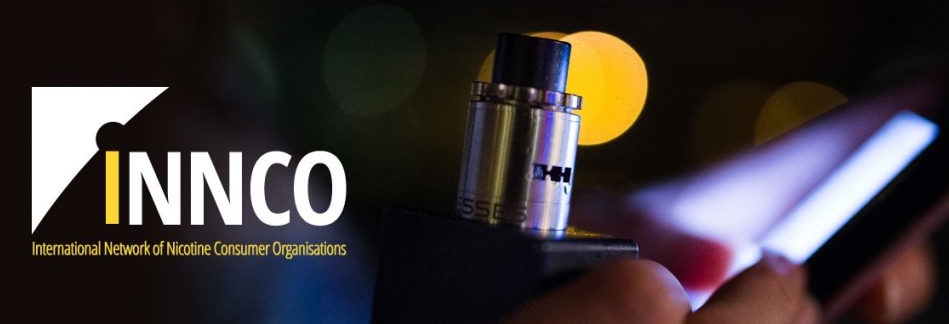Vapers Digest 3rd November

Friday’s News at a glance:
Knives out for nicotine pouches – Harry’s blog 122: THR is a human rights issue – FCTC: Does it work? #COP10 – Halifax road dubbed ‘Quitters Street’ – Spy Style Concealment Efforts – Belgium Urged to Prioritise Harm Reduction – CRUK Shares Policy Briefing – CoEHAR Writes to the European Commissioner for Health – Let’s talk e-cigarettes – Don’t copy Britain’s nanny-state tobacco ban – Nicotine Pouch Factory in Finland – Aussie black market ‘exploding’ – Impact of Cultural Pressures – In 2023 Youth Vaping Declined Again – Surprising Successes – Bans boost traditional cigarette sales – Unpacking National Vaping Statistics – Vaping & Politics with Dimitris Agrafiotis – Flavour Ban Fever
Knives out for nicotine pouches
Christopher Snowdon, Velvet Glove Iron Fist
Swedish MEP Charlie Weimars has blown the whistle on the EU’s plan to ban nicotine pouches. In a tweet (translated below), he provides a screenshot from a leaked report that crossed his desk.
The EU just can’t help itself. Nicotine pouches contain no tobacco and are surely the safest recreational delivery devices ever invented. The European Commission claims that the “growing popularity of nicotine pouches raises serious public health concerns and represents an increasing challenge for the internal market”. This is nonsense. The public health impact of these products is positive and the internal market is irrelevant, as the snus carve out for Sweden shows.
Harry’s blog 122:
Tobacco harm reduction is a human rights issue
A guiding principle of the World Health Organization (WHO) established in 1948, was the universal right to health. Although not expressed in these terms, the implication is that nobody gets left behind even if behaviours which potentially threaten health like illegal drug use and unprotected sex meet with societal disapproval.
This is the principle of harm reduction and has been accepted by the WHO for example, in designating methadone as an essential medicine to treat heroin addiction and in encouraging the use of condoms to help prevent the spread of HIV/AIDS especially between men. Tobacco harm reduction using safer nicotine products is an equally valid approach in helping to protect the health of these and other vulnerable and marginalised groups.
FCTC: Does it work? #COP10
COPWatch
In this article we look at a report posted on the Documentation – Supplementary information page on the FCTC COP10 website. Authored by the Secretariat, the report is titled: ‘Contribution and impact of implementing the WHO FCTC on achieving the noncommunicable disease global target on the reduction of tobacco use’. This report complements the ‘main document’ titled FCTC/COP/10/4: Global progress in implementation of the FCTC, which we wrote about here.
This supplementary document does a far better job than the ‘main document’(10/4) in describing progress made against the ultimate objective, which is to reduce death and disease from smoking.
This is brilliant. Imagine if Ireland followed the evidence on #vaping, learned from its nearest neighbours, and offered Irish smokers this kind of opportunity and support? @DonnellyStephen@malcolmbyrne @FrankFeighan @DuncanSmithTD. https://t.co/NPI1iHrKvr
— Gillian Eva Golden (@gillianegolden) November 3, 2023
Halifax road dubbed ‘Quitters Street’
As neighbours join forces to stop smoking
With the support of Yorkshire Smokefree Calderdale and Yorkshire Cancer Research, the residents have significantly improved their health and saved money by making the switch from smoking to vaping.
The neighbours, who all live in the Warley area of Halifax, have also found a new lease of life with the money they are saving, organising trips to places in Yorkshire they’ve never been to before and doing up their homes.
The associations @aiduce, @sovape_fr, @LaVapeDuCoeur and @FIVAPE have released preliminary findings of their huge Merci La Vape survey.https://t.co/k2OIa3Xyq1 pic.twitter.com/8zaIBWY4aE
— European Tobacco Harm Reduction Advocates (@europethra) November 3, 2023
The new US NYTS youth smoking and vaping data: some highlights, comments and graphics from me.https://t.co/0i87c43i0f pic.twitter.com/SIPZ4Jj2x2
— Clive Bates (@Clive_Bates) November 3, 2023
Five from Dave Cross, Planet of the Vapes:
Spy Style Concealment Efforts
In what Yorkshire cops have termed “Thunderhaul”, more than £100,000 of carefully concealed illegal tobacco and vapes have been smoked out in Dewsbury. The force has expressed its amazement at the length retailers have gone to in order to cover up their secret stashes which, officers say, is akin to “Spy film style secret locations”.
Officers from the Dewsbury and Mirfield NPT and West Yorkshire Trading Standards are continuing to investigate after seizing a high value haul of goods in a joint operation in Dewsbury on Monday October 23.
Belgium Urged Prioritise Harm Reduction
In 2022, the Belgian Superior Health Council acknowledged in a report to the government that vaping is less harmful than smoking and recommended smokers switch to vaping. Now, European members of the World Vapers’ Alliance are urging the Belgian government to address harm reduction as their health priority in the upcoming Council presidency term due to a lack of progress.
Last week, Politico published a working program of the Belgian presidency that addressed its five health priorities, including resiliency of health and health systems, health equality, and healthy population among others.
CRUK Shares Policy Briefing
Cancer Research UK (CRUK) says that following a meeting with the theme of e-cigarette packaging, it is “excited” to share its policy briefing on e-cigarette packaging and retail appeal. CRUK has based its opinions on “two in-depth research reports by the University of Stirling (Moodie et al) and the University of York (Thirlway et al)”.
CRUK says that the two studies aimed to understand how far e-cigarette packaging adheres to the current regulations and what it is about the packaging that may appeal to different ages and vaping/smoking status.
CoEHAR Writes to the EU Commissioner
The Centre of Excellence for the acceleration of Harm Reduction (CoEHAR) has written a letter to the European Commissioner for Health asking for a redefinition of anti-smoking policies. The experts in harm reduction express a desire that the European Union reconsiders its position in light of the wealth of scientific evidence supporting vaping.
In total, ninety harm reduction experts have urged the European Commissioner to consider the importance of applying risk reduction principles in public health policies to fight smoking addiction.
Parliament
MPs wanted to know how children are being educated about vaping risks and when we can expect the Education Department to publish its statutory guidance in the Relationships, Sex and Health Education curriculum. Nick Gibb, Minister of State for Education, provided lengthy responses to both questions.
Alex Cunningham, Labour Shadow Minister for Justice, asked the Secretary of State for Education what steps are being taken to ensure that relationships, sex and health education statutory guidance includes a requirement for pupils to be taught about the risks associated with e-cigarettes and vapes.
Let’s talk e-cigarettes
October 2023 Natalie Walker
Associate Professor Jamie Hartmann-Boyce and Dr Nicola Lindson discuss the new evidence in e-cigarette research and interview Associate Professor Natalie Walker, Faculty of Medical and Health Sciences, Social and Community Health, University of Auckland, New Zealand.
Natalie Walker discusses her study exploring the effectiveness of nicotine salt vapes, cytisine, and a combination of these products, for smoking cessation in New Zealand.
Don’t copy Britain’s nanny-state ban
Ian Irvine
Consistency is rare in government policy, especially in the regulation of “sin” goods — cannabis, alcohol, tobacco/nicotine and gambling. Ottawa frets over flavoured nicotine and e-cigarette liquid containing more than two parts in a hundred of the stuff yet is comfortable with the sale of extra-strength cannabis in uncountable flavors in combustible (i.e., carcinogenic) format. Though he apparently doesn’t use nicotine, Prime Minister Trudeau did fess up several years ago about cannabis and that apparently was enough to persuade the public service to get on side with legalization.
Nicotine Pouch Factory in Finland
Snusforumet
The Finnish town of Jakobstad is at the forefront of a historic shift in the tobacco industry with Habit Factory’s new nicotine pouch factory. This venture, blending tradition with innovation, promises economic growth and a significant step towards healthier tobacco alternatives, despite facing criticism.
Habit Factory, a Swedish company, is making a significant investment in Jakobstad, Finland, reviving the legendary Strengbergs tobacco factory. Their goal is to produce 40 to 320 million cans of nicotine pouches annually, signaling a new era in tobacco alternatives production and harm reduction.
Aussie black market ‘exploding’
NCA NewsWire
Australia’s illicit black tobacco market has continued to “explode”, according to police, with illegal tobacco linked to a string of recent gang murders and arson attacks across the country.
Scott Weber from the Police Federation of Australia told an inquiry into new vaping and smoking laws that the black cigarette market has become an increasing problem for state authorities.
The Impact of Cultural Pressures
On Tobacco Harm Reduction Efforts in Southeast Asia
More than 8 million people die each year as the result of diseases associated with the overuse of combustible tobacco products, with the majority (80 percent) of deaths coming from lower- or middle-income regions of the world. In Southeast Asia alone, which is one of the largest areas of tobacco production and consumption, approximately 1.6 million lives are lost to smoking-related disease each year.
Tobacco harm reduction (THR) is a strategy that encourages those who choose not to quit or who are unable to quit smoking combustible cigarettes to use alternatives such as electronic nicotine delivery systems (ENDS), heat-not-burn (HnB) tobacco products and smokeless tobacco products.
In 2023 Youth Vaping Declined Again –
Now Down Over 60% Since 2019 Peak – Jim McDonald
Despite claims by health agencies and tobacco control groups that flavored disposable vapes would ignite a new “epidemic” of youth vaping, fewer American students vaped in 2023 than vaped last year. The decline extended a trend in place since the 2019 youth vaping high-water mark.
The results come from National Youth Tobacco Survey (NYTS) preliminary data, released in today’s CDC Morbidity and Mortality Weekly Report. The NYTS, conducted annually by the CDC and the FDA Center for Tobacco Products (CTP), was administered this year between March 9 and June 16 to a representative sample of 22,069 American middle school (grades 6–8) and high school (grades 9–12) students. The complete results will be released around the end of the year.
United States youth vaping rates in freefall: debunks major Anti-vaping claims!
Latest CDC Data Reveals Decline in Teen Vaping: Time to End Moral Panic
National Survey Shows Drop in E-Cigarette Use Among High School Students
CDC Data Vindicates Tobacco Harm Reduction; Exposes FDA’s Failings
Tobacco Product Use Among U.S. Middle and High School Students
Surprising Successes
Cheryl K. Olson
U.S. smokeless tobacco users are no more likely to die from cancer than people who never touched tobacco products. This unexpected news comes courtesy of the National Longitudinal Mortality Study. Compared to those who never used tobacco, current users of smokeless products do not have elevated mortality risks from all cancers combined.
This was just one happy fact I ran across when writing articles for doctors summarizing alternative nicotine product risks and benefits. I felt a similar “Wow! Really?” writing recently for this magazine about today’s astonishingly low youth smoking rates.
Yale-led study shows …
That e-cigarette bans boost traditional cigarette sale
Seven states have banned flavored e-cigarettes. A recent Yale-led study found that these policies push smokers toward traditional cigarettes, a more lethal habit.
In a study published on Tuesday, Oct. 31, that funded by the Tobacco Center for Regulatory Science through grants from the National Institutes of Health and the U.S. Food and Drug Administration, researchers from Yale, the University of Missouri and Georgetown University analyzed retail sales from 2018 to 2023 and found that restricting flavored e-cigarettes increased conventional cigarette sales.
Ban on e-cigarettes…
May have denied tobacco users safer alternatives
KOCHI: The government’s ban on e-cigarettes, without exploring their potential as a harm reduction tool, may have denied tobacco users safer alternatives, a White Paper published by Kerala-based think-tank, Centre for Public Policy Research (CPPR) said.
The paper, titled ‘Alternate Agenda for The Framework Convention on Tobacco Control (FCTC) Conference of the Parties-10 (COP10)’ calls for establishing a sound regulatory framework for heated tobacco products (HTP) and electronic nicotine delivery systems (ENDS) to mitigate health risks associated with unregulated products in the black market.
Growing support for THR
SCOHRE
Thirteen* scientific organizations and associations spanning 4 continents around the globe support the consensus statement of SCOHRE—The International Association on Smoking Control and Harm Reduction—and advocate for the implementation of Tobacco Harm Reduction Strategies to improve people’s lives. The consensus statement was issued in view of the the upcoming Tenth session of the Conference of the Parties (COP10) to the WHO FCTC in Panama later this month, to convey a strong message that evidence in support of Tobacco harm Reduction cannot be ignored for much longer.
Unpacking National Vaping Statistics
R Street Institute
Electronic nicotine delivery systems (ENDS, also called e-cigarettes or vapes) have been widely available in the U.S. marketplace for over a decade. The media and public health agencies have made broad claims associated with the potential risks of these new products, pronouncing their role in both upticks in disease (EVALI, popcorn lung, etc.) and epidemics of use among youth. But industry and harm reduction advocates have touted ENDS products as a primary tool to help reduce smoking-related death and disease in this country and across the globe.
Now, with nearly 10 years of data and science behind us, what is the real truth about vaping? In this session, our experts will share what the data actually tell us about the potential of reduced-risk ENDS products and how they can help prevent the nearly 500,000 smoking-related deaths that occur in the United States each year.
EVIDENCE REVIEW OF VAPING
Colin Mendelsohn highlights his recent paper | #GFNNews
The evidence is clear: vaping is far safer than smoking, and vaping is a much more effective quitting aid than traditional nicotine replacement therapies. But many regulators and key stakeholders remain unconvinced. In this episode, Colin Mendelsohn discusses his recent review exploring the evidence behind vaping and the way forward for nicotine in Australia. Read the report here: https://colinmendelsohn.com.au/report-2/
Vaping & Politics with Dimitris Agrafiotis
Vaping Unplugged Podcast Ep. 28
Today, we are thrilled to welcome Dimitris Agrafiotis, widely known as the Vaping Greek. Not only is Dimitris the EU Director of Operations at Monster Vape Labs, but he’s also the former Director of the Tennessee Smoke Free Association. His reputation precedes him as one of the most outspoken voices in harm reduction advocacy. In this episode, we dive deep into the intricate relationship between vaping and politics, and the ever-evolving landscape of harm reduction.
Flavour Ban Fever
Canadian Provinces Threaten Health Gains | RegWatch
With Quebec’s flavour ban on nicotine vaping products now in effect, the clock is ticking on what may become a public health disaster for the province.
According to a growing body of research on the impact of flavour bans, sales of combustible cigarettes are likely to grow while safer nicotine vaping products crater.
Most alarmingly, where sales of flavoured nicotine products are restricted, teens tend to turn to smoking—destroying the very reason for implementing flavour bans in the first place.
On this Day…2022
A look back at how things have moved on or otherwise….
Chaos, waste and failure:
What is wrong with FDA tobacco regulation, and how could it improve?
Clive Bates, The Counterfactual
This is my response to the operational review of the performance of the FDA’s Center for Tobacco Products by the Reagan-Udall foundation. The heart of the problem is the lack of a coherent regulatory strategy, grounded in real-world understanding
The Reagan-Udall foundation is conducting an “operational review” of the FDA’s handling of its tobacco and nicotine brief. The review was commissioned by Robert Califf, the FDA’s Commissioner. I have submitted comments through the stakeholder portal. Please consider making your own submission – it’s easy.
My contribution is available below, in a formatted PDF version and via the stakeholder portal.
Think Tank Publishes Alternative Strategy
Tobacco Reporter
Ahead of the Nov. 3 parliamentary debate on the independent review of smoke-free 2030 policies, the Institute for Economic Affairs (IEA) has published an alternative strategy to reduce the smoking rate in England, titled The Alternative Smoke-Free 2030 Plan.
This approach stands in contrast with the recent Khan Review, which recommended banning the sale of cigarettes over time. Report author Christopher Snowdon argues that as long as demand exists—only 53 percent of British smokers say they want to quit—prohibitionist policies will result in endemic black market activity, crime and secondary poverty without eradicating smoking.









